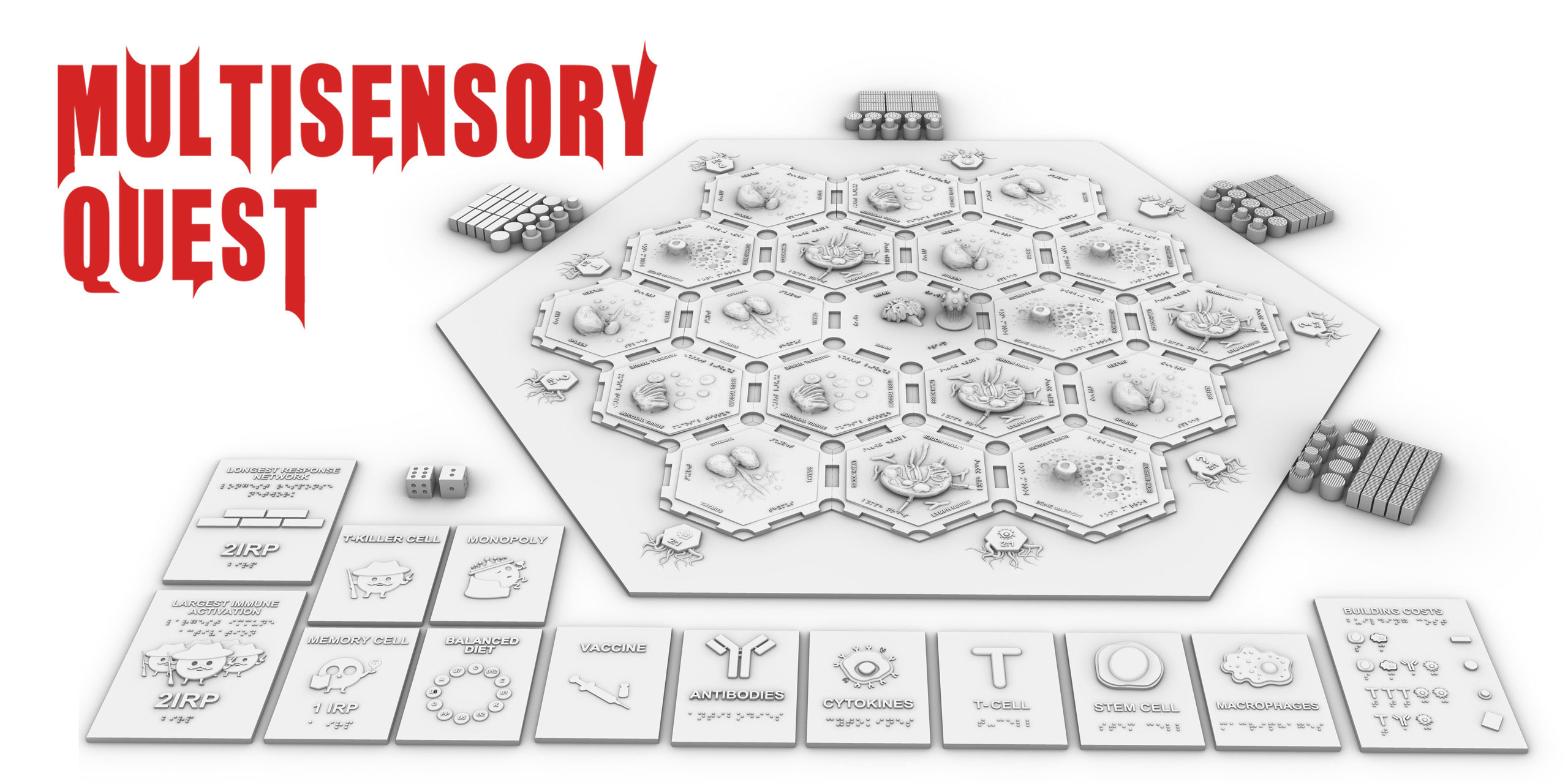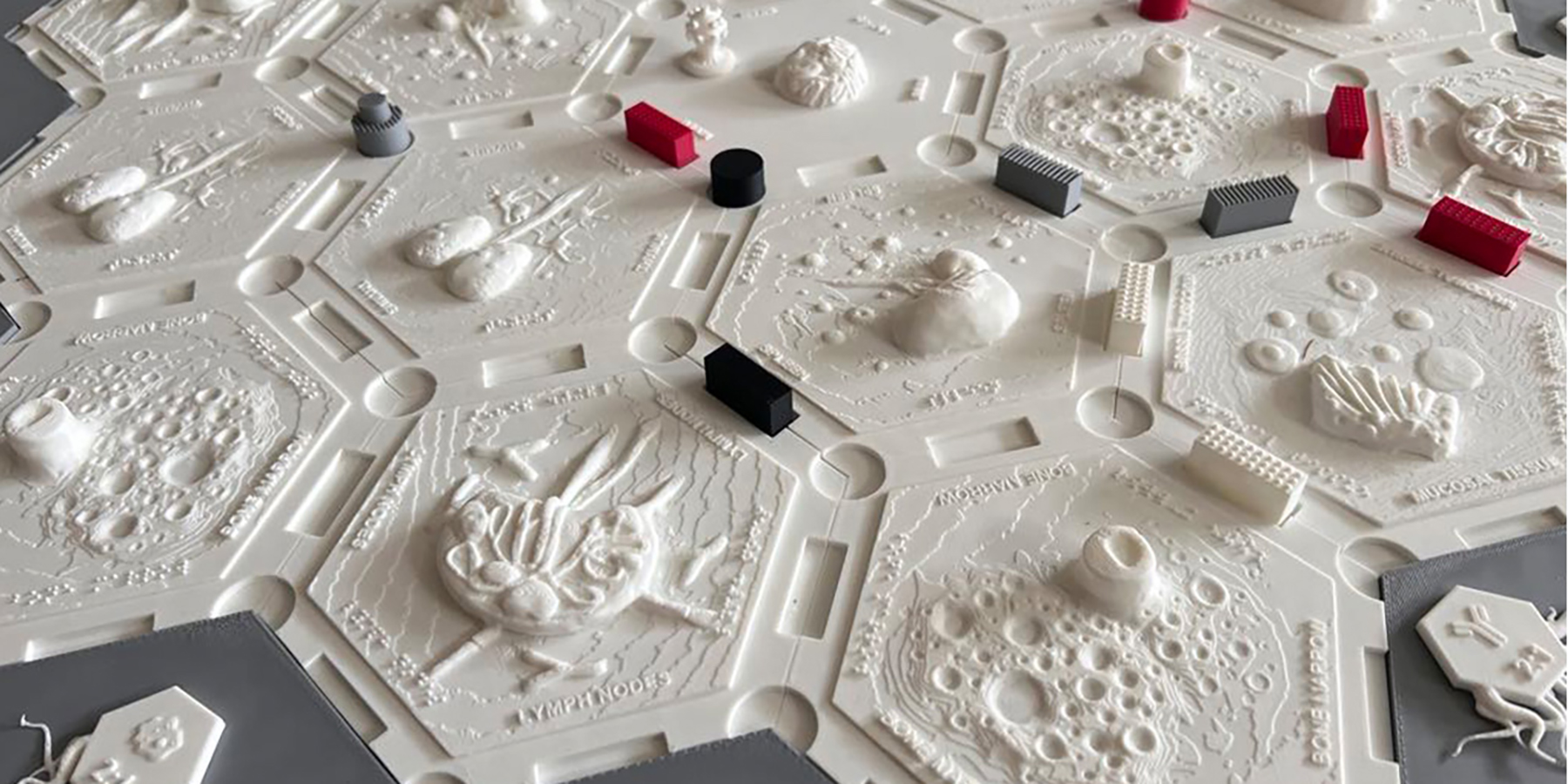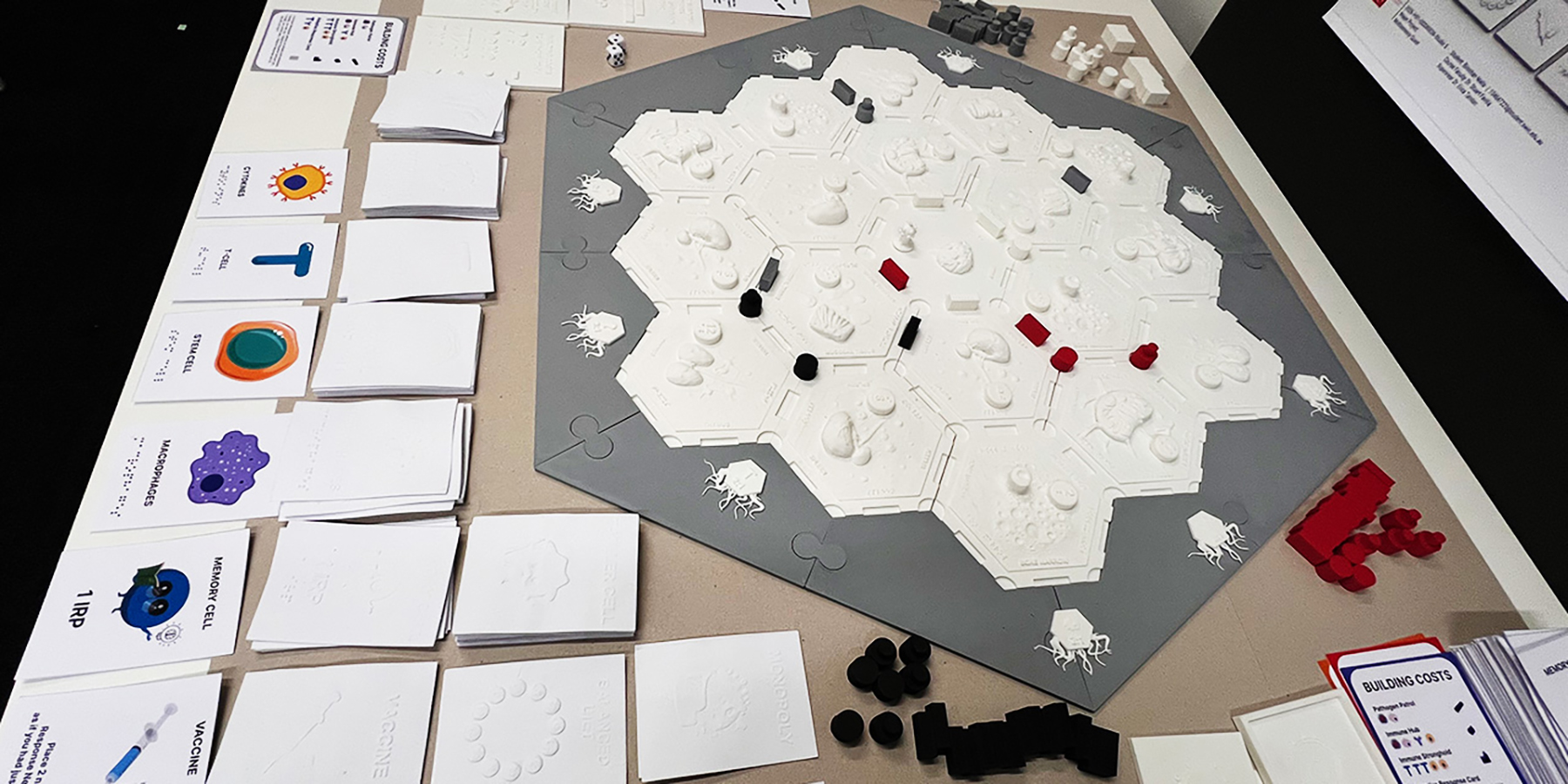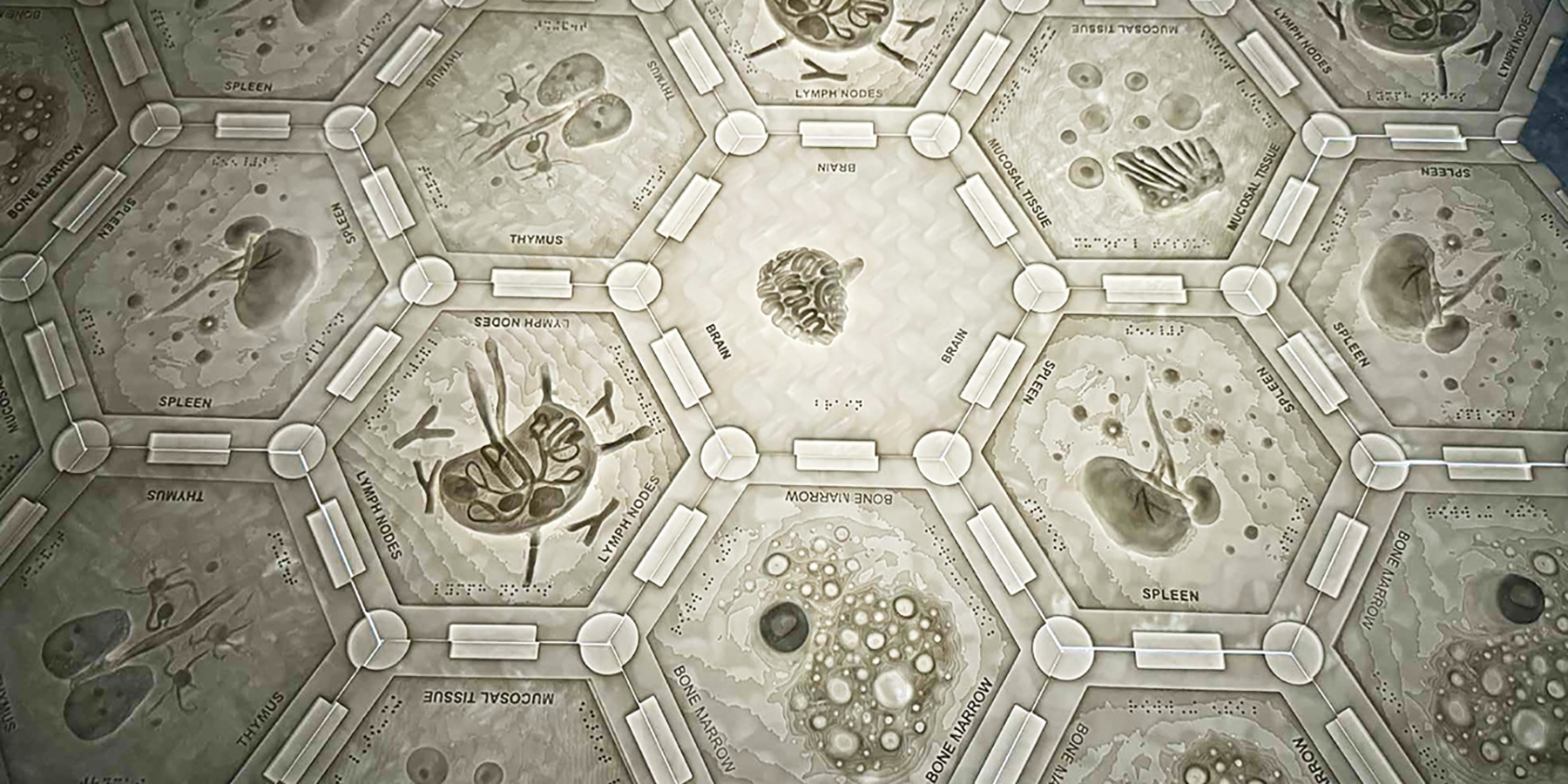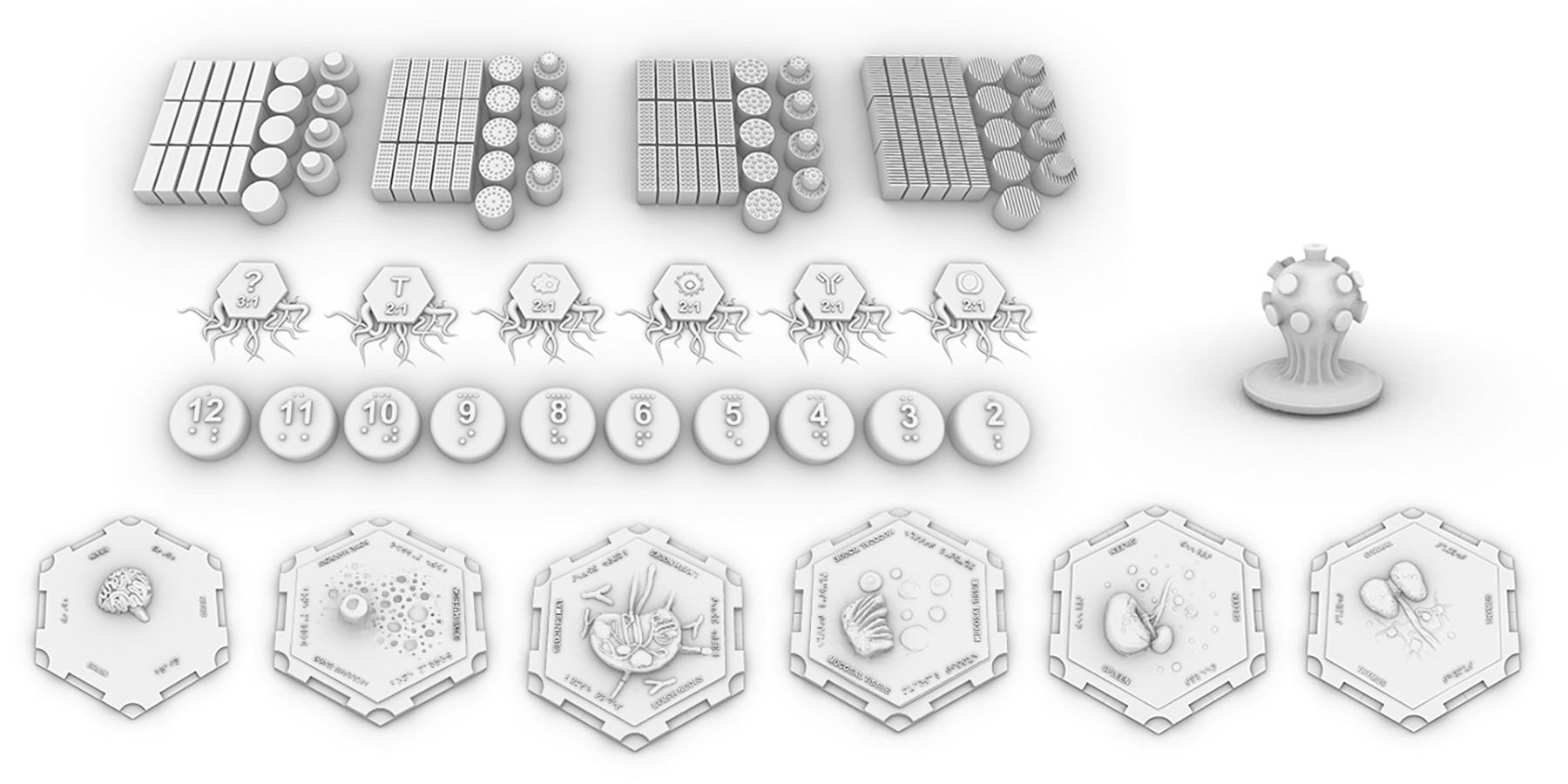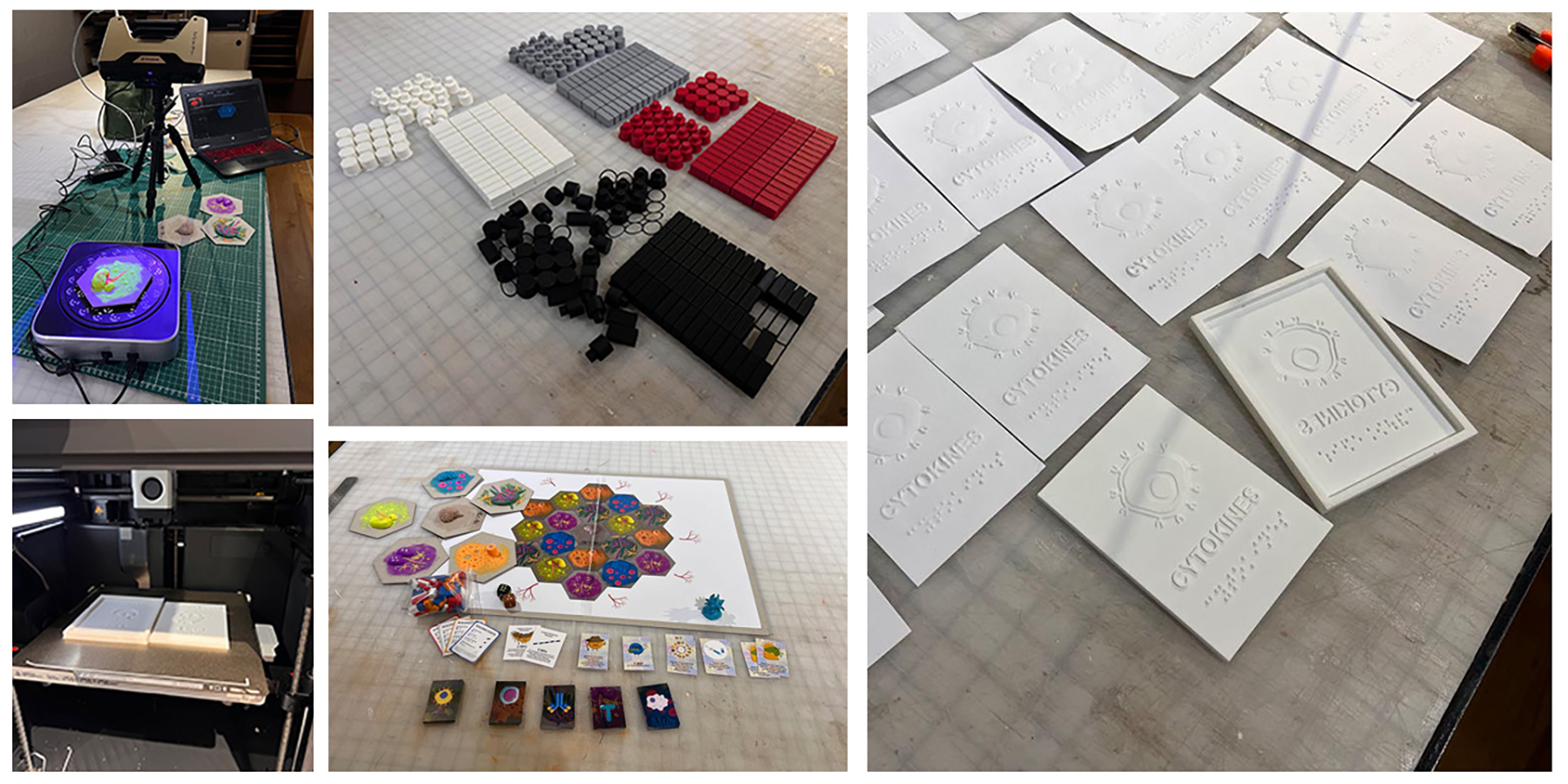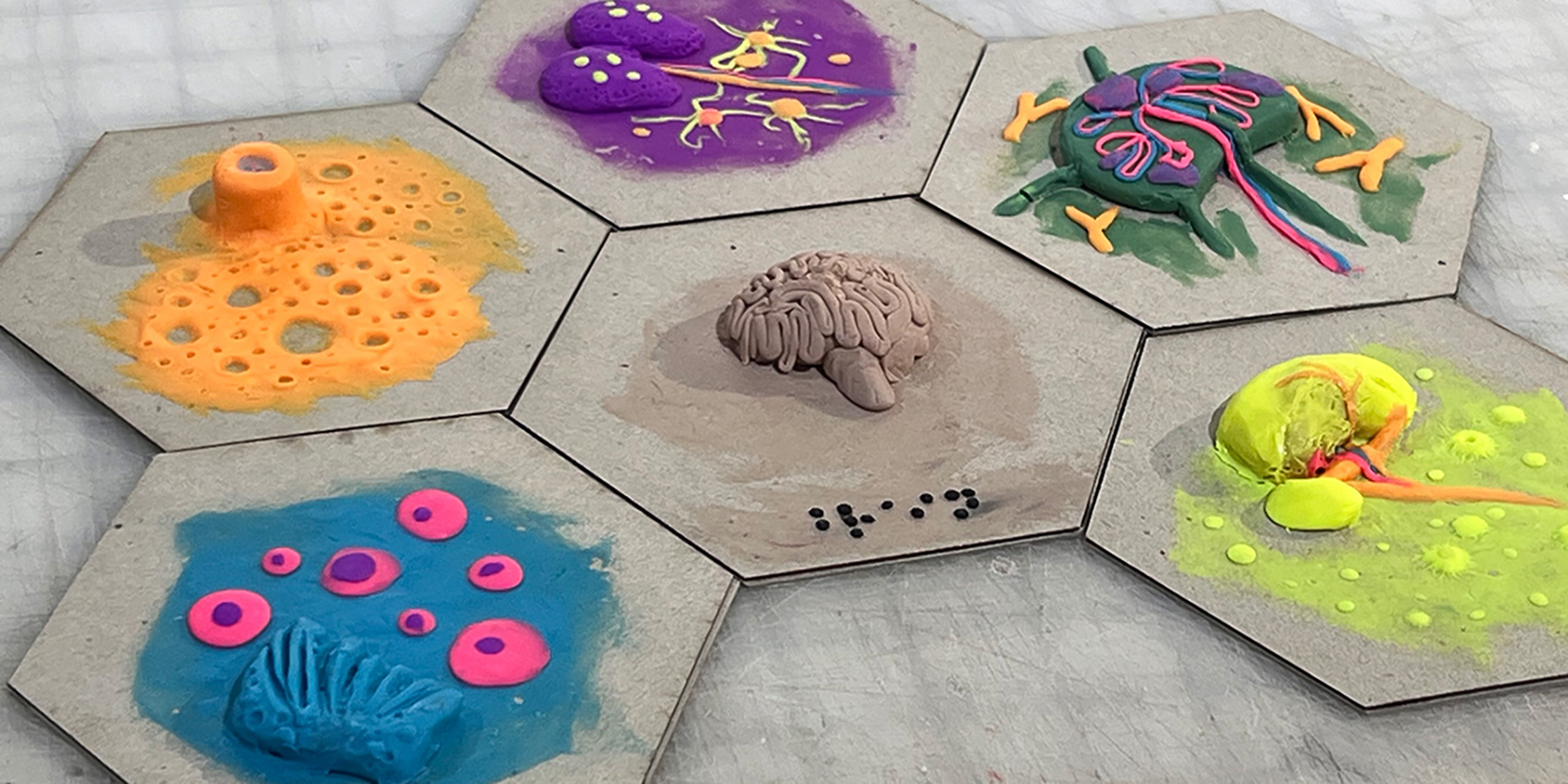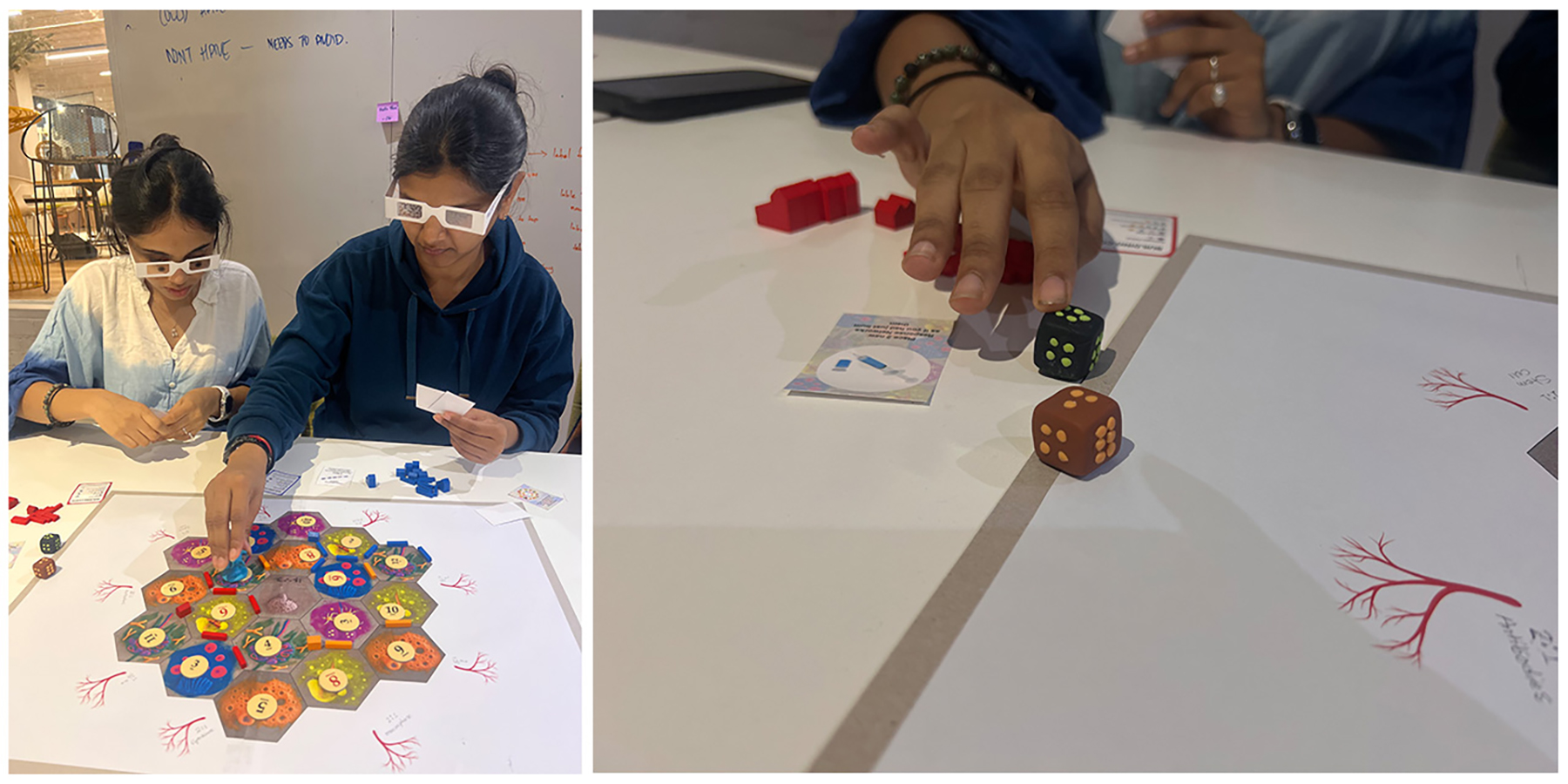This project followed a rigorous, professional iterative design process to make complex immunology concepts accessible to blind, low vision, and diverse-needs learners. Grounded in human-centred and inclusive design, the process followed a year-long investigation including comprehensive research phase followed by iterative design cycles, evaluations and play-testing.
The process leveraged the lived experience of legally blind artist and science communicator Dr Erica Tandori (Monash Sensory Science & Swinburne), whose insights profoundly shaped the tactile image and braille elements. Under the supervision of inclusive design and science communication specialist Dr Stu Favilla (Swinburne) design research integrity and professional design standards were maintained. Highly detailed comparative case studies of boardgames were also undertaken.
Drawing inspiration from social board games like The Settlers of Catan, the project explored how strategic, tactile gameplay could be reimagined for blind, low vision and general audiences. Early low-fidelity prototypes tested tactile symbols, Braille integration, and sound cues. Iterative cycles of sketching, tactile form exploration, laser cutting, and hundreds of hours of 3D printing then refined the design. The process was then guided by participatory feedback sessions with proxy users wearing blindness and low vision simulation together with the expert consultation of Dr Tandori at Monash Sensory Science Project.
The design process explored the creation of bespoke tactile tiles, 3D printed Braille, spatial mechanics, and lithophane image-making that welcome both sighted and non-sighted players. It was then professionally executed using durable, sustainable materials and accompanied by clear multisensory instructions.
This project exceeded its original brief creating an entirely new communication experience that both redefines inclusive STEM learning and contemporary boardgame design. Implemented through a completed prototype and presented in Melbourne, Sydney and Brisbane for 2025 National Science Week, it stands ready to inform future practice—setting a new benchmark for professional, inclusive design excellence in Victoria and beyond.

